The Japanese Classroom
In the beginner's mind there are many
possibilities, but in the expert's mind there are few.
Shunryu Suzuki (1905-1971) Japanese Zen master
From "Aaron Fuegi's Collected Quotations," an internet collection of
quotations.
Photos of and text about modern Japanese classrooms by Eugene Matusov
![]()
Art lesson, 7th grade, Nagoya 1996
There are 48 students in the class. Middle and High schools are located in one building. All students wear uniforms.

Each student works on individual art project -- painting using watercolor paints. The teacher walks around the classroom helping individual students.

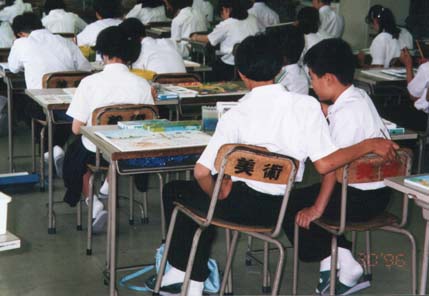
Sometimes students consult with each other. Quiet talking among students is allowed by the teacher.
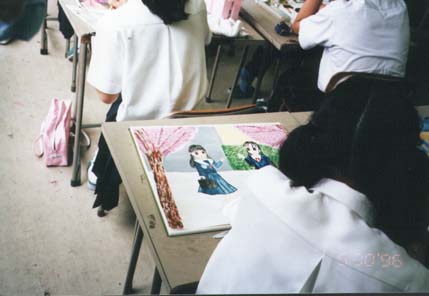
Many students choose to draw scenes from school life.
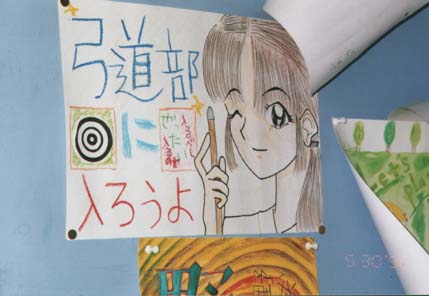
Students' paintings are heavily influenced by Japanese comics books very popular among adults and children.
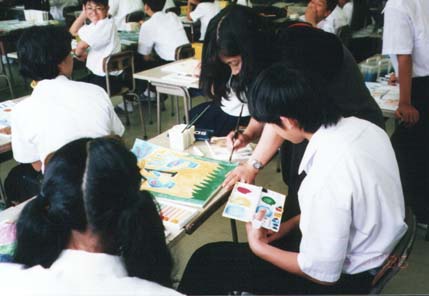
The teacher demonstrates how to paint to a student.
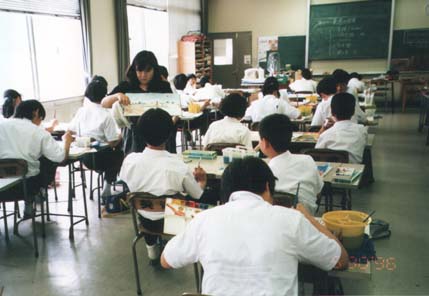
Sometimes the teacher works with a group of students.
![]()
English lesson, 7th grade, Nagoya 1996

The class has English lesson in a specialized English classroom. All students move from classroom to classroom together for the entire year.
The content of lesson is very simple: He is a friend, she is a student. However, the teacher has a very interactive and fun way of teaching this potentially boring content.
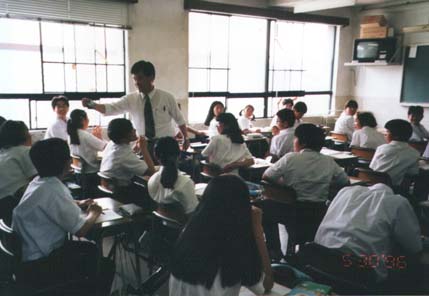
The teacher prepares photos of him with older students from the school. He asks in English who is who and who is whose friend. There is constant teasing: students tease the teacher (e.g., "she is your girlfriend"), while the teacher teases students choosing a boy and a girl from the class and asking in English, "Are you friends?" That forces the students to find ways to reject this suggestion creating more and more sophisticated answers in English (e.g., "I'm a student, not Takeshi's friend!") There is a lot laughter.

The teacher skillfully moves from funny to serious matters, from a contextual use of English phrases to considering grammar of the sentences.
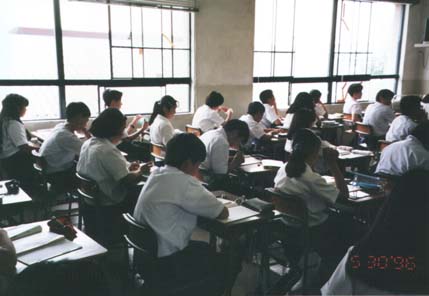
All 45 minutes the students are actively working on the material. However, you can see two students in the row near the windows secretly exchanging messages. It is rather common in the classroom but seems not bother the teacher. Some messages are written in English.
![]()
Chemistry lesson, 11th grade, Nagoya 1996
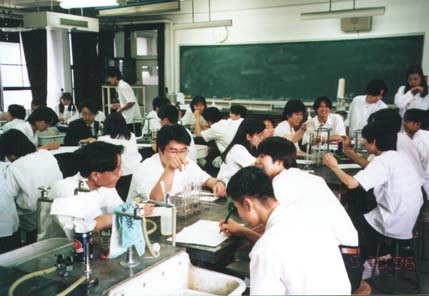
During the chemistry lab practicum, the class split on groups each working on its own project of producing and differentiating assigned chemicals. The atmosphere is rather noisy and fun. The teacher walks from group to group and provides guidance as needed.
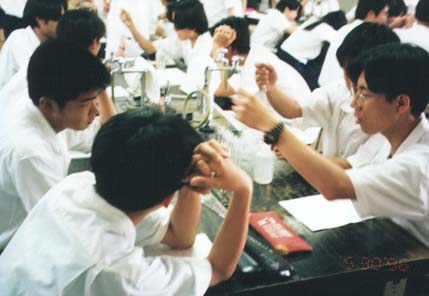
All members are involved in the work. There are no "free riders."
![]()
Ancient Japanese Classroom, The Cathedral of Learning



(Preliminary Design)
In Japan, the Imperial Court, more than any other institution, has shaped Japanese arts and literature. The 17th-century Detached Palace of Prince Toshihito, near Tokyo, represents the simple, solid house of the Japanese commoner, refined and made elegant by the aristocrats of the Imperial court under the influence of Zen philosophy and the aesthetics of the Zen cult.
The preliminary design for the Japanese Nationality Room is based on Katsura which houses a main hall, several tea pavilions and a garden. The Tea cult had developed a taste for natural unadorned things. Yet the unadorned should also be beautiful. From this tradition came Katsura's rough hew stepping stones, ceilings made of uncovered thatch and beams of plain wood. Proportion was stressed, imbuing the seemingly simple with grace and dignity.
As Katsura the stepping stones are placed in a pattern which is not only visually striking, but causes the visitor to walk at a stately, elegant pace. The design incorporates architectural forms reflecting the individualism which Zen produced. This is seen in the alcoves which provide a framework for one or two works of art and covered shelves for storing the remaining collection. Many shelves mean a rich collection but at the same time, by limiting the number of objects which can be shown, the alcove concentrates the viewer's attention of the particular art chosen for display.
![]()
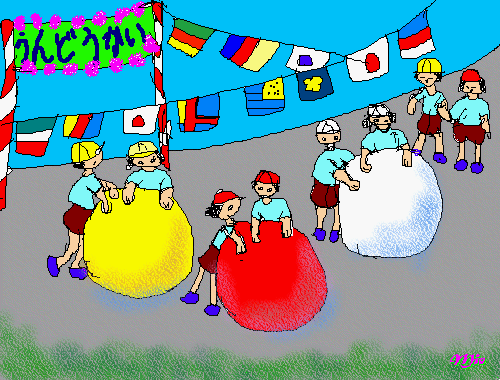
It's really autumn in October when a field day is held in the elementary and middle schools all over Japan. Buntings are flapping in the sky, tents are set up around the truck, white line is drawn along the running course. School children come together wearing training uniform and a red or white cap.Parents and grandparents also join the field with home made lunch boxes in hands to cheer children. Encouraged by the cheer of family and friends, children play gleefully in running, ball casting to the basket, big ball rolling, obstacle racing, gymnastics, relay running with parents, and folk dance.In the lunch time children rush to the family lot to enjoy home made lunch. It is really wonderful to take rice ball or delicately arranged rolled Sushi under the blue sky of autumn.After lunch, the program still goes on. In the end, children exchange cheering between the teams. After cleaning up the field, family goes home in twos and threes.
It is really a pleasant day in autumn. The tenth day of October is a national holiday called "Health-Sports Day." Many gymnastics related events are held here and there to promote wholesome activities. Let's do something good for health!
https://www.coara.or.jp/~mieko/hinadan.htm